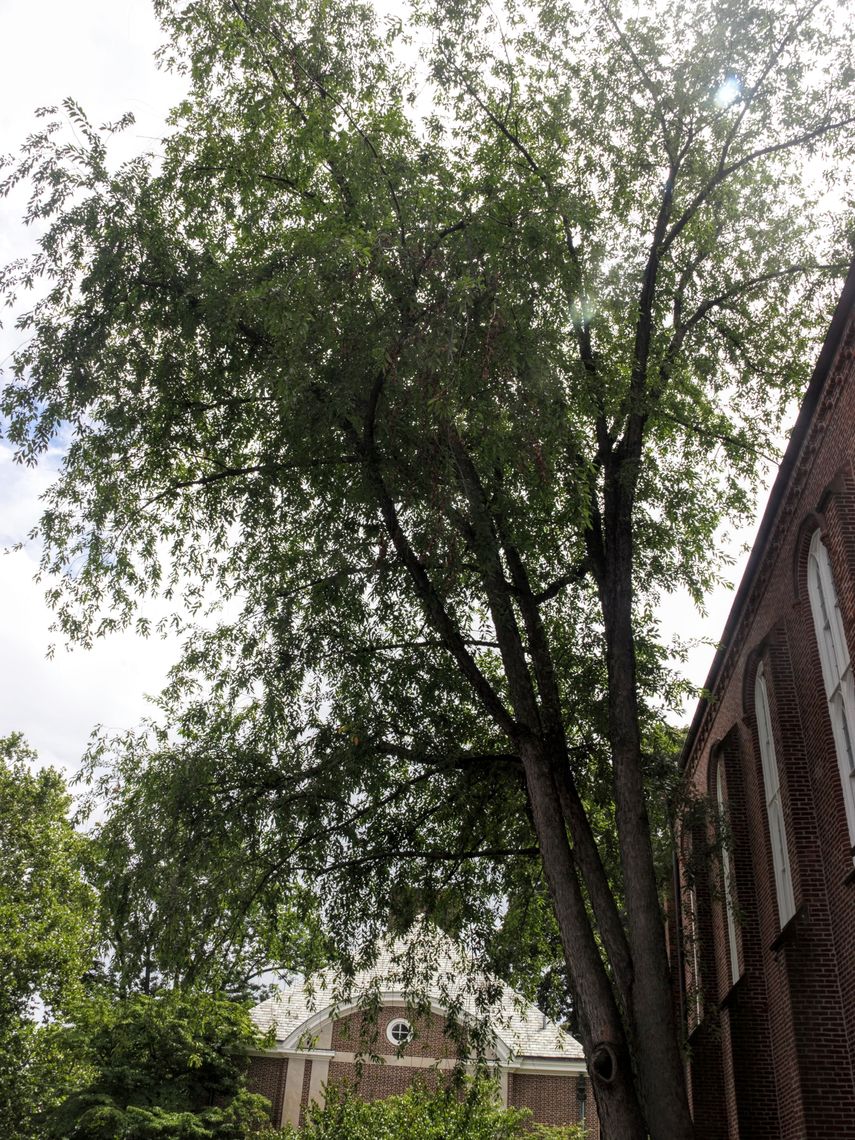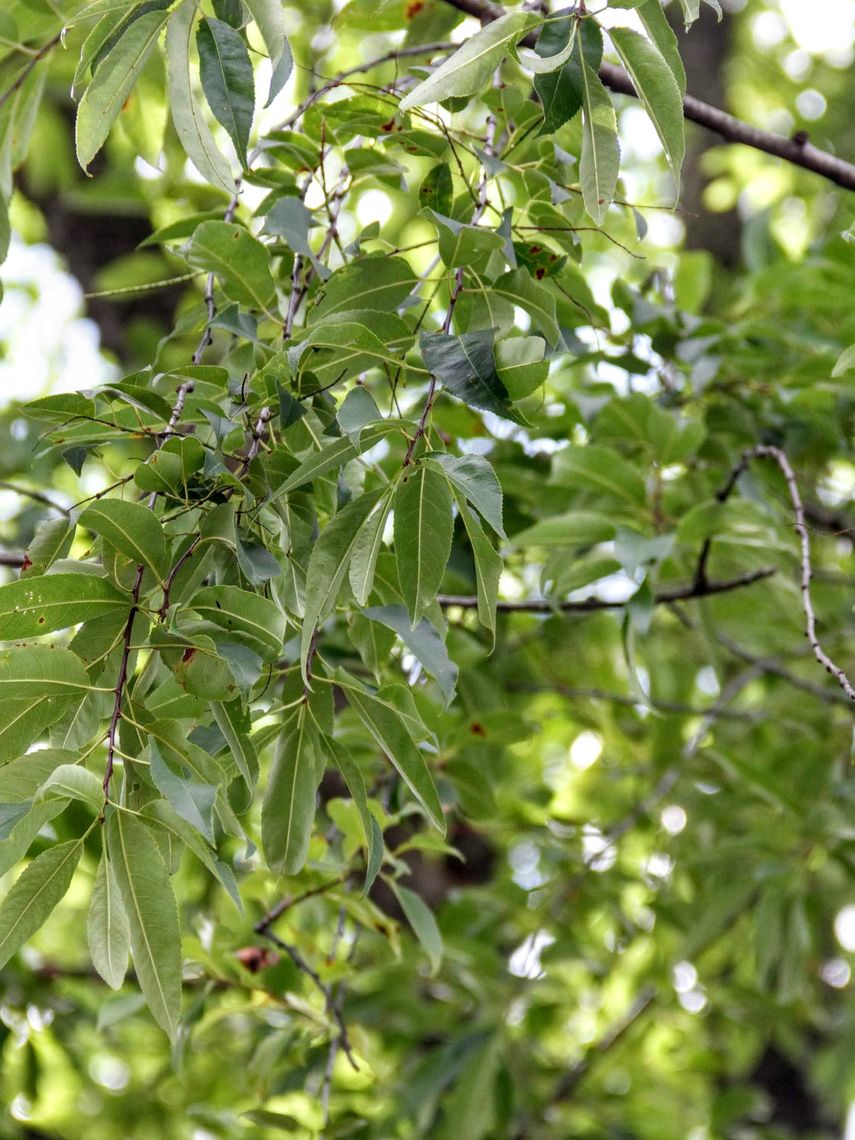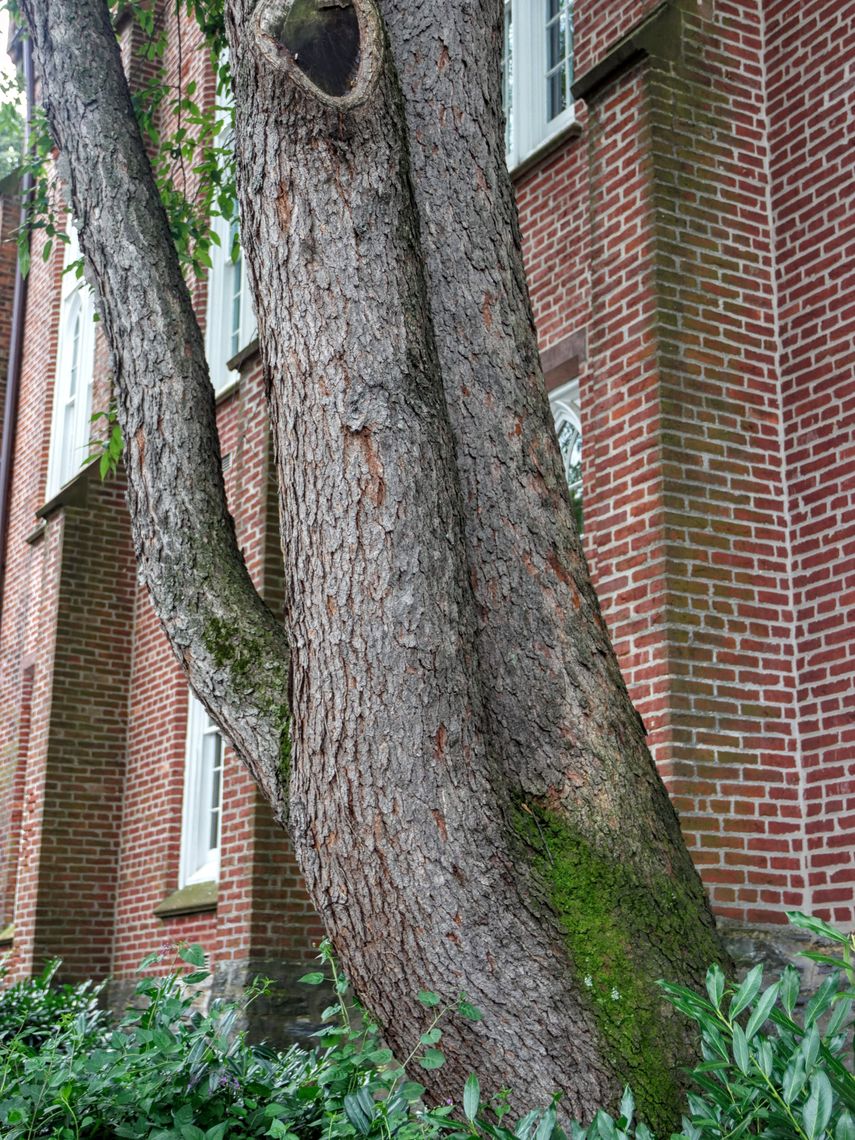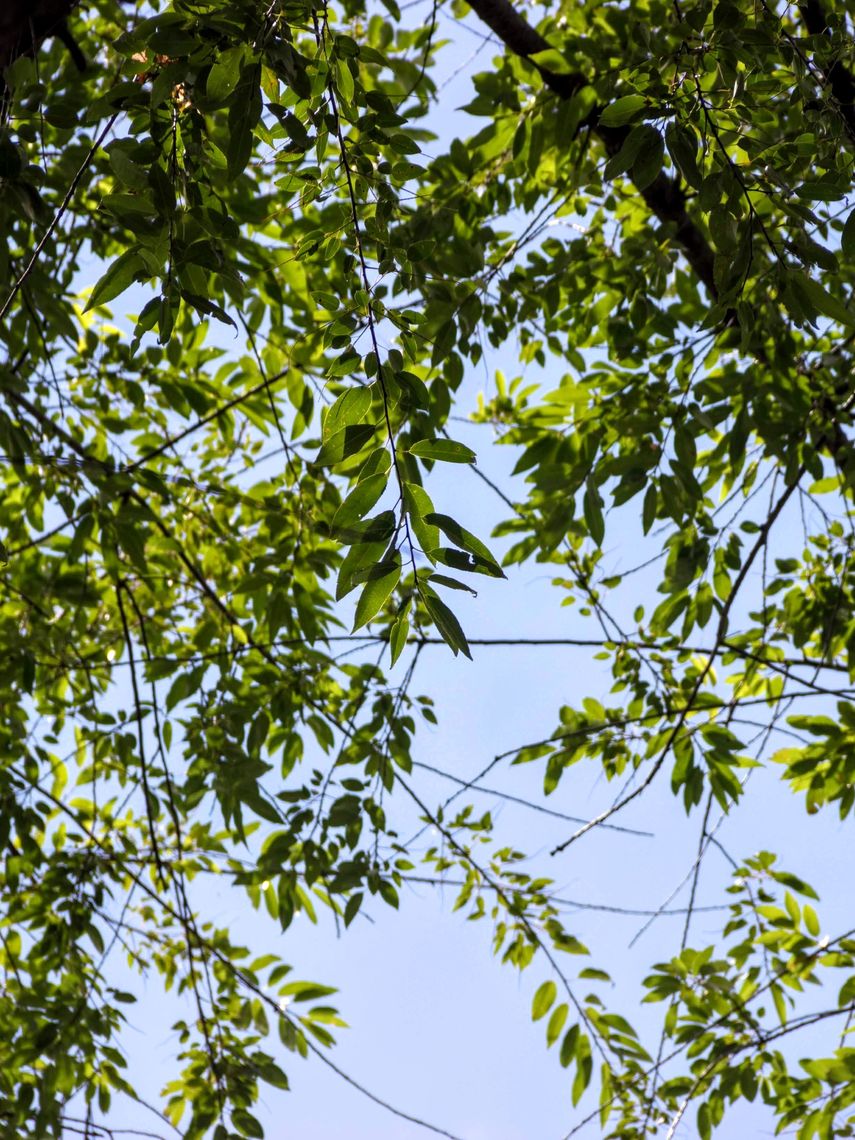Black Cherry (Prunus serotina)
The black cherry is most notable for its spring blossoms of small, white flowers that appear in 4-inch to 6-inch-long hanging clusters. These flowers are followed by small, berry-like, red fruits, that also appear in hanging clusters. These fruits ripen in late summer and turn purple-black when ripe. Though they are bitter and inedible fresh off the tree, these berries are often used to make jams and jellies. This tree attracts insect pollinators, birds, and small and game mammals.
Family: Rosaceae (Rose)
Characteristics: The 2-5 inch long leaves are finely toothed and dark green. New leaves emerge bronze to bright green. In the fall, leaves turn yellow and red. In May, small white flowers begin to bloom in 4-inch to 6-inch-long hanging clusters. These flowers are followed by drooping clusters of small, berry-like, red fruits, that ripen to a purple-black in late summer. Bark is dark gray or almost black, and scaly with upturned edges. When young, this tree has a pyramidal shape. It becomes oval-shaped and develops hanging branches with age. This tree grows 50-60 feet high and 20-30 feet wide.
Foliage: Deciduous (leaves lost seasonally)
Geographic Origin: North and Central America (native)
Cultivation Notes: Requires low maintenance. Does best in full sun, though can tolerate part shade. Prefers acidic, moist, and well-drained soils. This species may be difficult to transplant, due to its deep taproot.
Number on Campus: 5
Sources: Dirr, Morton Arboretum, Missouri Botanical Garden




